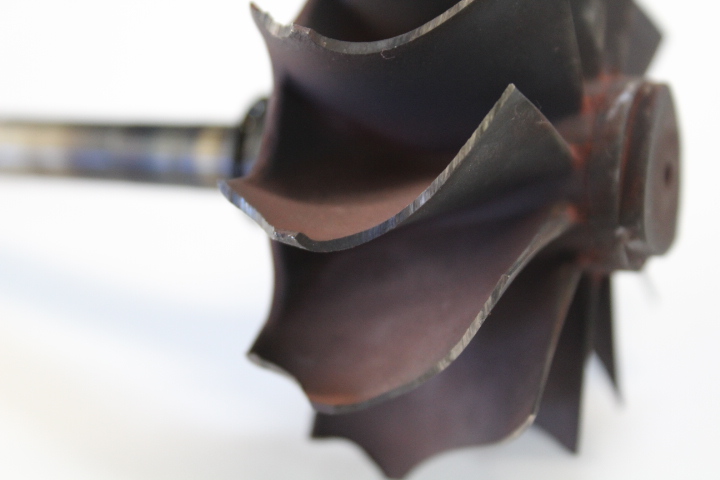
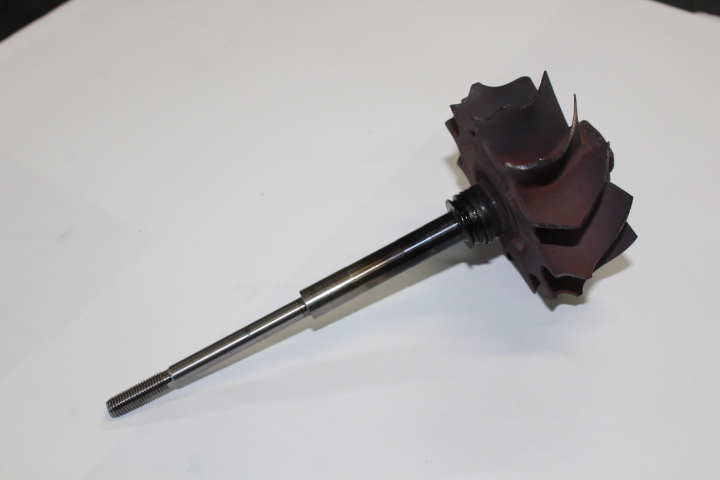
Colour on shaft indicates overheating due to insufficient cooling, coolant vaporization or excessive exhaust gas temperatures.
Large chips on lower side of the turbine wheel indicate that a foreign object has passed through the exhaust venturi, while the smaller grinding on the top of the turbine wheel indicate contact with the turbine housing.
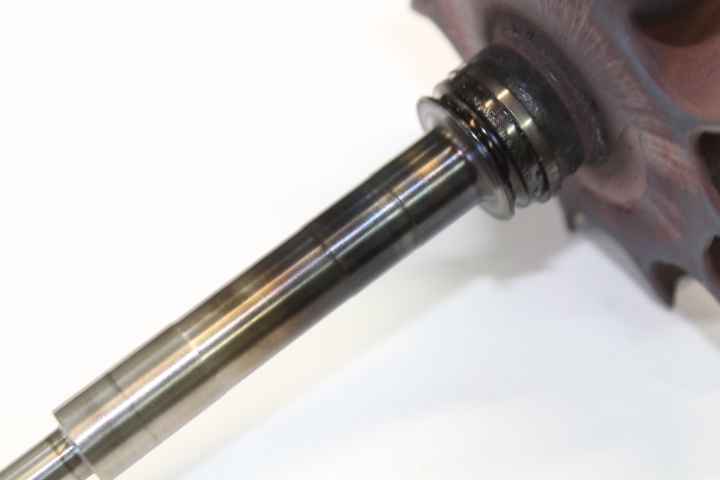
The straw and bronze colours indicate heats between 200-260°C
The purple colours indicate heats around 280°C
The blue colours indicate heats from 300-340°C
Ideally we should not see any colour.
Engine oil operating temperature should be around 80-100°C but as seen below, temperatures have been much higher.
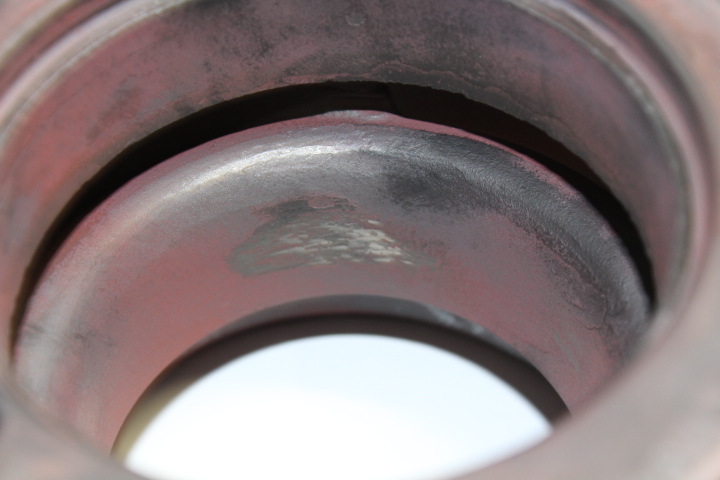
The point where the turbine wheel has been touching the housing due to housing warp.
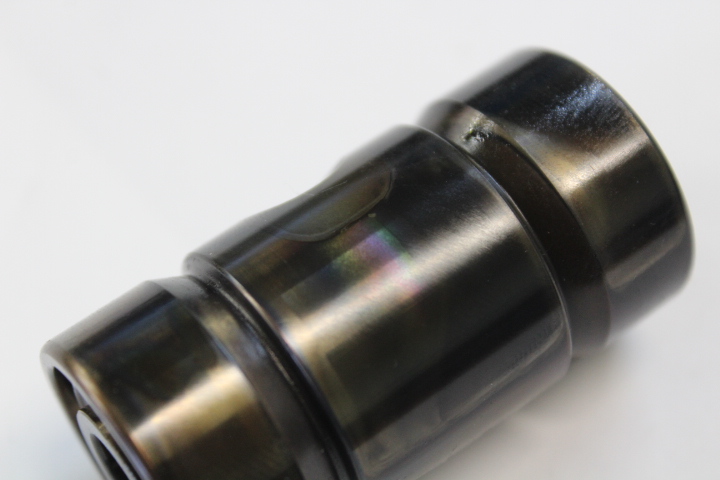
Variation of concentrated colours suggest lots of heat on a single point.



